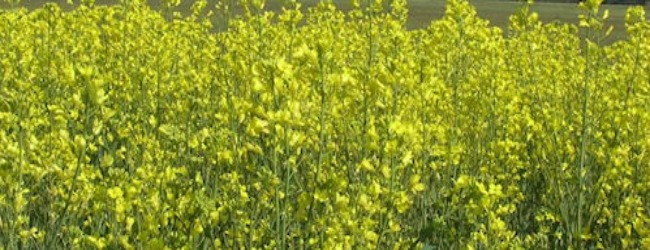Capturing camelina benefits
December 8, 2016



Camelina meal now allowed in layer hen feed in Canada.
The Canadian Food Inspection Agency recently approved the inclusion of 10 per cent camelina cake in feed for egg-laying hens. The federal agency had earlier approved cold-pressed, non-solvent extracted camelina meal for broiler chickens at up to 12 per cent inclusion. Another application is going forward to approve the inclusion of camelina in dairy cattle rations. Similarly, the U.S.-FDA has expressed “no objection” to feeding camelina meal to broiler chickens and laying hens up to 10 percent of their final diet.
New science has uncovered fresh knowledge on the nutritional value of camelina -- including the potential of new feed technology options, such as multi-carbohydrase enzymes, to maximize efficiency and performance with diets utilizings this feedstuff.
Here are three things to know:
Camelina, also known as ‘false flax’ or ‘wild flax,’ is an oilseed crop that initially experienced significant demand before the recent era of dominance of rapeseed and canola. The unique crop, recognized as an excellent source of Omega-3, is now enjoying a fresh resurgence due to its advantages as an option for healthy oils, biofuels, high-end bio-lubricants and bio-plastics, and even jet fuel. It grows well on the Canadian prairies and in key U.S. growing regions, where it is well adapted and has resistance to many common pathogens and pests.
“The rise in camelina production is now becoming a good news story for livestock and poultry industries, because the residual meal left over after oil extraction has shown an attractive nutritional profile for animal feed,” says Rob Patterson of Canadian Bio-Systems (CBS Inc). “As an added advantage, the high concentration of Omega-3 oils in the meal has been shown to produce Omega meat in broiler chickens – making it a great source not only of high quality feed but as a means of adding value to poultry products.”
A growing body of research, including a recent study with broiler chickens, shows that supplementation with a multi-carbohydrase enzyme formulation can substantially boost the nutritional power of camelina meal.
The study, conducted by CBS Inc. in collaboration with the University of Alberta, focused on variations of a diet using corn and cold-pressed camelina cake (CPCC). Diets that included multi-carbohydrase supplementation showed a substantial increase in the standardized ileal digestibility (SID) of three different major amino acids – methionine, threonine and tryptophan – along with a strong overall boost to the apparent metabolizable energy, N-corrected (AMEn) value of the diet, which increased by 5.6 percent.
(The AMEn value shows the difference between the gross energy in the feed and the gross energy in the feces, urine and gasses, to reflect how much energy is actually captured by the animal instead of passed through undigested.)
"The results show multi-carbohydrase is effective with camelina meal and strong gains are possible,” says Patterson, who conducted the study along with Dr. Tofuko Woyengo and Dr. Ruurd Zijlstra of the University of Alberta. “Indications are the level of advantage can be further increased depending on the level of multi-carbohydrase used and the overall diet composition. Each poultry operation can determine the ratios that work best economically and effectively for them, depending on their own specific objectives and feeding approaches.”
The further analysis of camelina has strengthened knowledge of its high nutritional value, which is greatly pronounced when used with the feed technology, says Patterson. “Our study confirms it has a lot to offer from a nutritional standpoint and that using the right formulation of multi-carbohydrase is an effective way to capture more of that full nutritional value.”
While it’s one thing to have strong nutritional value, it’s another to make sure as much of that value as possible is available for absorption and use by the animals, he explains. Multi-carbohydrase enzyme technology, with its multiple enzyme sources and activities, acts as a universal key that frees nutrients from a number of otherwise hard-to-digest feed components. “This supports the maximum nutrient extraction possible for energy and growth.”
“The results show multi-carbohydrase is effective with camelina meal and strong gains are possible,” says Patterson. “Indications are the level of advantage can be further increased depending on the level of multi-carbohydrase used and the overall diet composition. Each poultry operation can determine the ratios that work best economically and effectively for them, depending on their own specific objectives and feeding approaches.”
The CBS Inc. and University of Alberta study involved 600 male broiler chicks divided into 40 groups and fed five diets in a completely randomized design with eight groups per diet, from 15 to 21 days of age. Differences were observed among variations of a corn-based basal diet, the same basal diet with 30 percent replaced by CPCC, and both of these diets without or with multi-carbohydrase enzymes supplementation, as well as an N-free diet.

